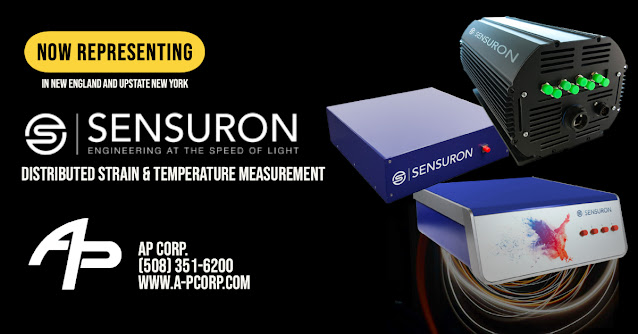AP Corp is pleased to announce its selection as Sensuron's New England and Upstate New York Authorized Representative.
ABOUT SENSURON
Starting as an informal partnership with NASA and a formal licensing agreement in 2011, Sensuron began developing off-the-shelf fiber optic sensing systems and then designing cutting-edge fiber optic sensing platforms that allowed companies to consolidate their testing and measurement solutions. Sensuron is now a leading global provider of distributed strain and temperature sensing platforms for applications across industries and is now expanding to liquid-level and 2D deflection.
Sensuron's fiber optic sensing technology enables engineers to perform structural testing, design optimization, structural health monitoring, thermal mapping, and shape sensing with an efficient, robust, and simple-to-use tool.
AP Corp is proud to be representing Sensuron in all of New England and Upstate New York. For more information call (508) 351-6200 or visit this web page.
AP Corp.One Tara Boulevard
Suite 200
Nashua, NH 03062
www.a-pcorp.com
508-351-6200 (office)
